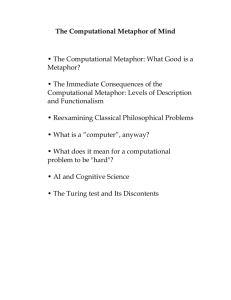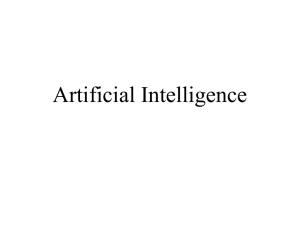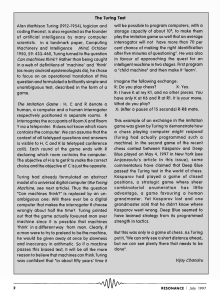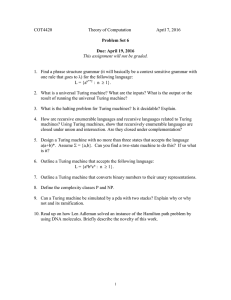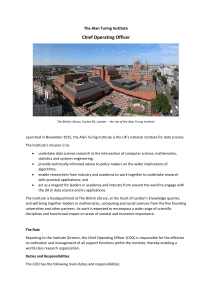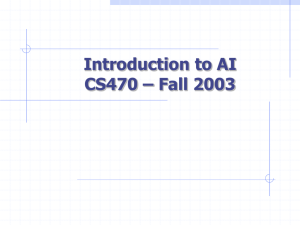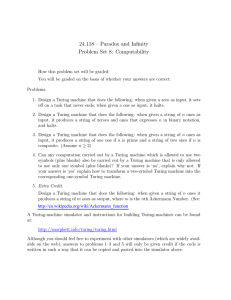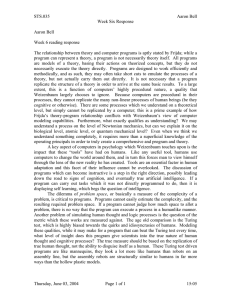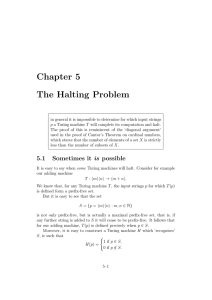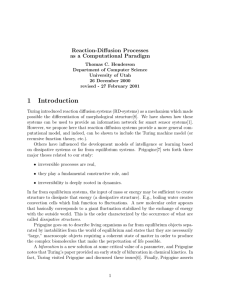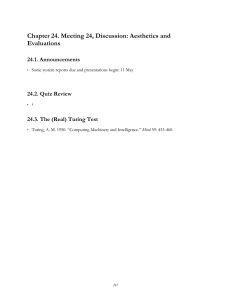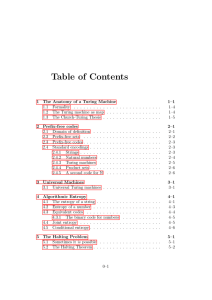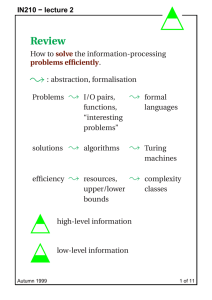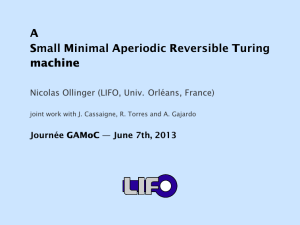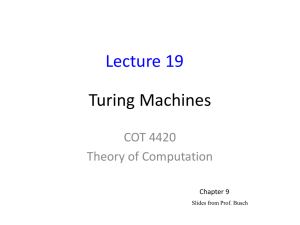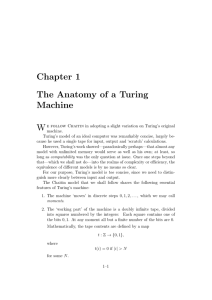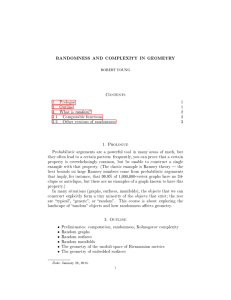Kenneth W. Regan: Human-Computer Complementarity
advertisement
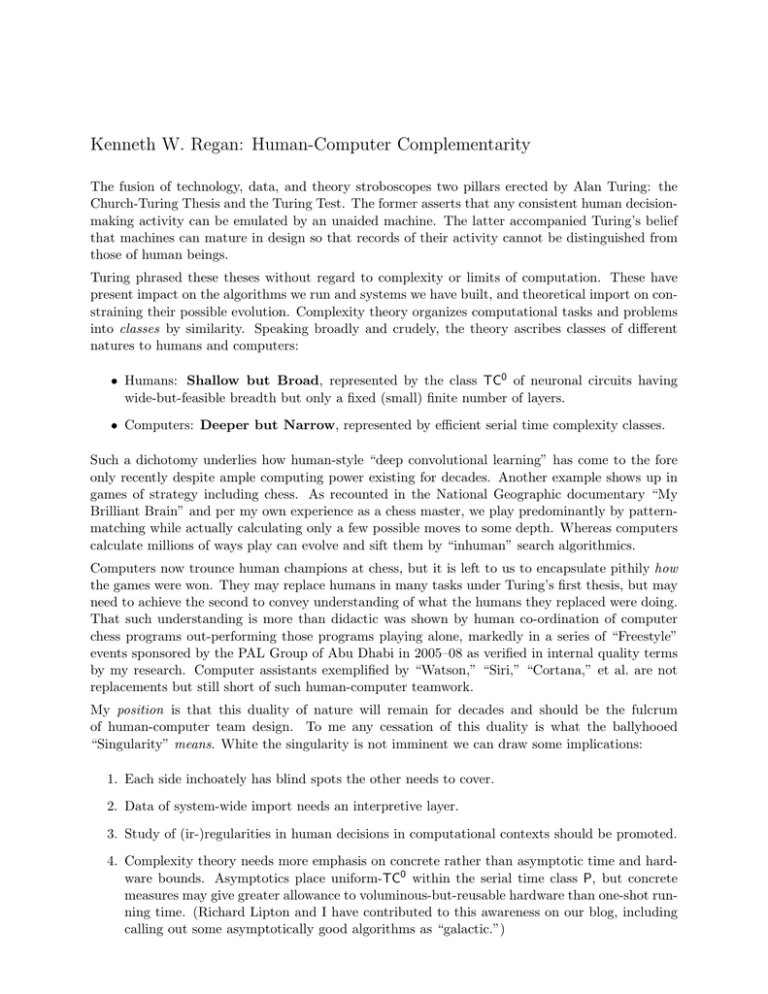
Kenneth W. Regan: Human-Computer Complementarity The fusion of technology, data, and theory stroboscopes two pillars erected by Alan Turing: the Church-Turing Thesis and the Turing Test. The former asserts that any consistent human decisionmaking activity can be emulated by an unaided machine. The latter accompanied Turing’s belief that machines can mature in design so that records of their activity cannot be distinguished from those of human beings. Turing phrased these theses without regard to complexity or limits of computation. These have present impact on the algorithms we run and systems we have built, and theoretical import on constraining their possible evolution. Complexity theory organizes computational tasks and problems into classes by similarity. Speaking broadly and crudely, the theory ascribes classes of different natures to humans and computers: • Humans: Shallow but Broad, represented by the class TC0 of neuronal circuits having wide-but-feasible breadth but only a fixed (small) finite number of layers. • Computers: Deeper but Narrow, represented by efficient serial time complexity classes. Such a dichotomy underlies how human-style “deep convolutional learning” has come to the fore only recently despite ample computing power existing for decades. Another example shows up in games of strategy including chess. As recounted in the National Geographic documentary “My Brilliant Brain” and per my own experience as a chess master, we play predominantly by patternmatching while actually calculating only a few possible moves to some depth. Whereas computers calculate millions of ways play can evolve and sift them by “inhuman” search algorithmics. Computers now trounce human champions at chess, but it is left to us to encapsulate pithily how the games were won. They may replace humans in many tasks under Turing’s first thesis, but may need to achieve the second to convey understanding of what the humans they replaced were doing. That such understanding is more than didactic was shown by human co-ordination of computer chess programs out-performing those programs playing alone, markedly in a series of “Freestyle” events sponsored by the PAL Group of Abu Dhabi in 2005–08 as verified in internal quality terms by my research. Computer assistants exemplified by “Watson,” “Siri,” “Cortana,” et al. are not replacements but still short of such human-computer teamwork. My position is that this duality of nature will remain for decades and should be the fulcrum of human-computer team design. To me any cessation of this duality is what the ballyhooed “Singularity” means. White the singularity is not imminent we can draw some implications: 1. Each side inchoately has blind spots the other needs to cover. 2. Data of system-wide import needs an interpretive layer. 3. Study of (ir-)regularities in human decisions in computational contexts should be promoted. 4. Complexity theory needs more emphasis on concrete rather than asymptotic time and hardware bounds. Asymptotics place uniform-TC0 within the serial time class P, but concrete measures may give greater allowance to voluminous-but-reusable hardware than one-shot running time. (Richard Lipton and I have contributed to this awareness on our blog, including calling out some asymptotically good algorithms as “galactic.”)

